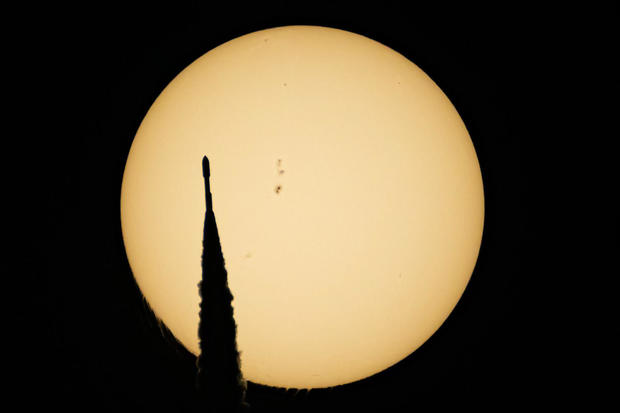
The NRO and Space Force have launched surveillance satellites to keep an eye on potential enemies in outer space.
On Sunday, a rocket from United Launch Alliance, the Atlas 5, was launched to send several National Reconnaissance Office satellites into space. These satellites are meant to monitor the actions of possible hostile spacecraft in the same orbit used by spy satellites, communication stations, and other important American assets.
The “Silent Barker” payload, consisting of an unspecified quantity of satellites designed for use in geosynchronous orbit at a distance of 22,300 miles above the equator, is referred to as NROL-107.
Chris Scolese, the director of the NRO, stated that the goal of the mission is to place a satellite in geosynchronous orbit and monitor its activities on a daily basis.
Due to the occurrence of Hurricane Idalia and subsequent technical difficulties, the 18th and last Atlas 5 NRO mission was designated as ULA’s final flight, as the company progresses towards their new Vulcan rocket.
Although the NRO openly disclosed the overall purpose of the NROL-107 payload, information regarding the ascent and orbital parameters of the Silent Barker satellites was classified. Due to this, ULA halted their launch commentary once the first stage of the rocket completed its “burn” and further details about the flight were not immediately accessible.
The concept of a geosynchronous orbit is widely known. At this specific distance from Earth, satellites complete one orbit in 24 hours, keeping in sync with the rotation of our planet and appearing still in the sky. This allows for global coverage for various purposes such as surveillance, communication, and weather monitoring.
During a significant conflict, it is likely that military satellites used for reconnaissance and communication would be the main focus of anti-satellite weapons. Prior to this, they may also be subject to close-range examination by enemy spacecraft. It is believed that both China and Russia have satellites capable of maneuvering, meeting, examining, and potentially disrupting U.S. and allied spacecraft.
The NRO is not open about its payloads, but for Silent Barker, officials mentioned that they wanted enemies to be aware of America’s capability to track potential threats in the “geo belt.” This area is challenging to observe from the Earth’s surface due to the vast distances and unpredictable weather and lighting conditions.
Lt. Gen. Michael Guetlein, leader of the U.S. Space Force’s Space Systems Command, stated that a significant factor in deterring threats is the adversary’s awareness of our surveillance capabilities. We want our rivals to be aware that we have visibility in the geostationary orbit and can observe their actions.
We will not only uphold custody and the capability to identify events in geographical areas, but we will also have indicators and alerts to inform us of any unusual activity. This greatly contributes to our ability to prevent such actions.
The initial Silent Barker-type missions were launched on Sunday, with at least two more planned. The program is projected to be fully functioning in 2026.
According to Scolese, Silent Barker will give us vital information and alerts to guide our decision-making regarding necessary maneuvers and awareness. This will significantly enhance our comprehension of our capabilities and greatly improve our ability to plan for the future.
More More
Source: cbsnews.com

